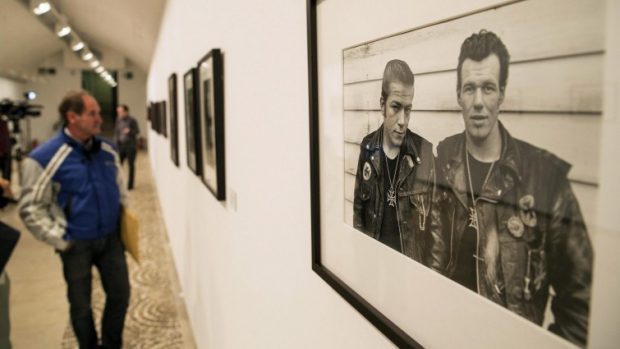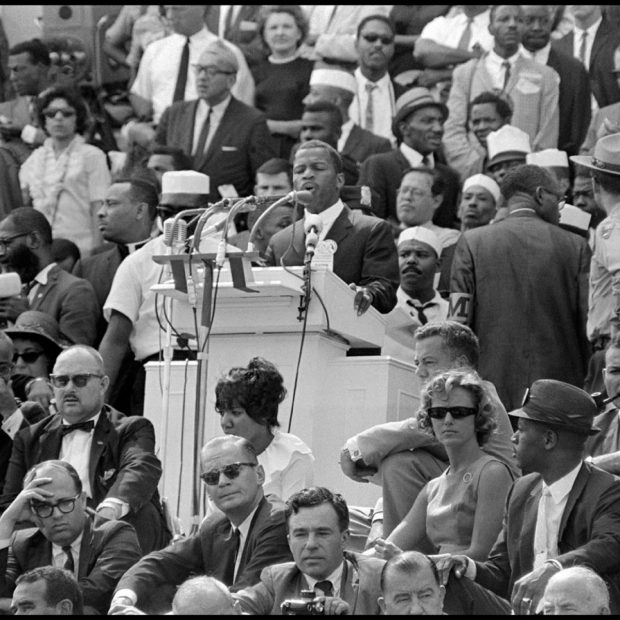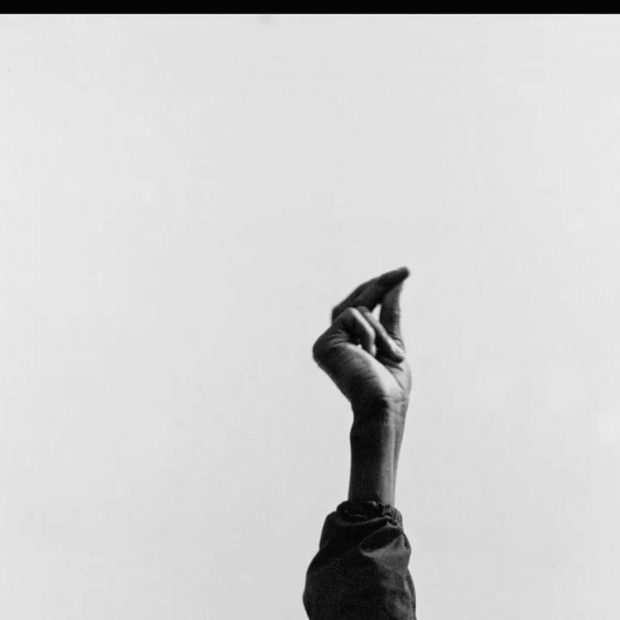
Now, 79-year-old American photographer, Danny Lyon doesn’t spend his time in Europe. His beginnings are located in the American civil rights movement of the sixties, where he documented the protests against race separation. But the first real retrospective of his career is now taking place in Europe, in the FotoMuseum Winterthur.
If you stand in front of the pictures of the American photographer Danny Lyon, you will be put in another time. And you are wondering how far away the American sixties appear us today – and how close that is, historically seen: brutal racial discrimination in the industrially developed land of the earth, John F. Kennedy was President, the army bombarded North Vietnam.
Danny Lyon rather randomly got into the civil rights movement: In the semester break, he watched a sit-in black student in Illinois, who protested against race separation in front of a white open swimming pool. Lyons’ pictures document the customary police for those occasions, and the photographer suddenly knew what his vocation was. He traveled with the protest movement, photographed gatherings, arrests, funeral celebrations. Iconic photos arise like “The March on Washington” of August 28th.

Iconic photos like “The March on Washington” of August 28th.
Sprinter Tommie Smith and John Carlos protested against racial discrimination in the 1968 Olympics during the award ceremony. A late video, 50 years later, but also shows how naive it was – on the one hand, “black power”, on the other hand guiltlessly detained, believing black girls who sang powerful gospels.
The son of Jewish parents from Queens studied history in Chicago when he joined the civil rights movement. So he discovered photography at the age of 20 years. In 1968 his first photo book “The Bikeriders” appeared, a DIN-A5-great paperback about the subculture of motorcyclists. In the Genrekino, this first broad youth culture movement of the post-war period had found its rainfall in films such as “the Wilde ” with Marlon Brando, Kenneth Anger celebrated her in his avant-garde film “Scorpio Rising”. But now the scene changed visibly under the eye of the media and the aegis of new laws. “Would ‘the Wilde’ turn today, Marlon Brando and the Black Rebel Motorcycle Club would have to wear a helmet,” Lyon wrote in the foreword.

Danny Lyon’s “Message to the Future”
Lyon was temporarily the official photographer of the “Student Nonviolent Coordinating Committee”. Participating, committed, maybe one should also say: embedded photojournalism, “New Journalism”. A few years earlier, 1958, Robert Frank “The Americans” had published – this mixture of reportage and art photography was for Lyon model and scale. And that’s what you can see: black and white pictures, in the action or in a special moment, close to the people.

Danny Lyon: “The Bikeriders”
The exhibition in Winterthur then shows the main topics of Danny Lyon. He stayed where it hurts, at the bottom, in the exploited and losers, and he comes very close to them. As a member of a motorcycle gang, the “Chicago Outlaws Motorcycle Club”, he traveled the US – the band “The Bikeriders” shows this tremendous desire for expansion and freedom, which apparently can only be realized with motorized violence.
See also Edge Viewing Platform Experience
“Yes, hi, you were in Vietnam? Okay, let’s get a tattoo.” The need to burn emblems into the skin is a social distinguishing feature. Sanders also defies the bodies of women, decorated butt and breasts that are now finally declassified.
That hurts, as Danny Lyon talks with prison insoles, excluded gays, workers without papers. Lyon has often worked with O-tones and protocols, not only in the movie, interview soundtracks complement the photos threatening the photos. Its series about the circumstances in American prisons, on mining and harvest workers and frontier workers in New Mexico, exploited and street children in Colombia, Bolivia, Haiti bring in a subtle way of violence. We can not feel the pain of the portraits, but our ancestors. However, even more, disturbing ones are those photos of the sixties that work metaphorically – if Lyon documented the profit-related demolition of the old, from the 19th century Lower Manhattan or showing the battered cars of the Stockcar race: you destroy the opponent until no one rides can.
See also Flea Markets and Antiques: Where to Find Pieces of History in New York
These are symbols of social conditions. Danny Lyon, now 79, is still active; Sometimes he photographs for the “Occupy” movement, but sometimes only boulders and Water tanks in the desert of New Mexico. Water for the desert – Danny Lyon has contributed to his part that the desert is recognizable as such.
Like us on Facebook for more stories like this: